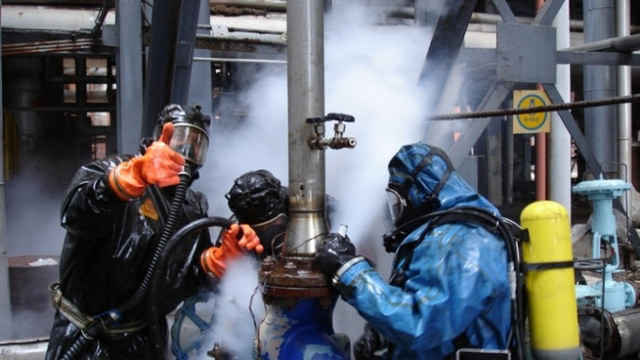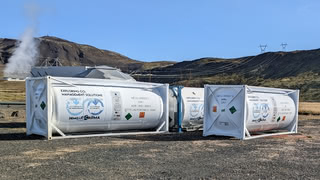Ammonia safety lessons from the refrigeration industry
Green ammonia as a shipping fuel has unique safety issues due to its toxicity. In a webinar, John Mott from the Ammonia Safety and Training Institute shared some insights from experiences in other industries.

Green ammonia is seen by many as a promising option for a carbon-neutral shipping fuel. But a concern around the gas is that it comes with risks not seen with other fuels. The Ammonia Energy Association recently organized a webinar on the safety aspects of ammonia.
"The new thing we have to learn now when using ammonia instead of natural gas is really the toxicity of it," said Kaj Portin from ship engine builder Wärtsilä, which is currently developing a 4-stroke ammonia engine. According to Portin, the explosivity of ammonia is less than that of natural gas, which the industry already uses in LNG ships. Yet, the toxicity means that even small leakages must be taken care of.
Safety is one of the critical issues when considering ammonia as a future fuel, and some stakeholders think the risk is too high and should exclude it as an option. It is also the case that fatal accidents with ammonia used on ships – not used as a fuel, but as a refrigerant – do happen.
John Mott from the Ammonia Safety and Training Institute (ASTI) shared some insights about safety procedures when working with ammonia in other industries. Existing usages of ammonia include the fertilizer industry and refrigeration. Ammonia is widely used as a refrigerant. Therefore, the refrigeration industry already has to deal with safety issues regularly.
Ammonia fatalities in the refrigeration industry reduced, but "still too high"
ASTI was started in 1987 by a fire chief. According to Mott, at that time, around ten people died per year in the US refrigeration industry due to accidents with ammonia. By implementing trainings and safety measures, this number has been brought down to about one death per year. "It's still too high,"* Mott said.
Mott described different scenarios for a potential ammonia release. When liquid ammonia is released from a pressurized system, it leads to the creation of flash gas. In the process of boiling, the gas will expand, and that causes a cloud of aerosols and gases heavier than air. A release of liquid ammonia from a cooled system at or close to atmospheric pressure would lead to a less dangerous scenario where the ammonia liquid just slowly evaporates.
According to existing guidelines, it is expected that ammonia concentrations up to 30 parts per million will not cause permanent health issues to people breathing it. But according to Mott, people will already feel uncomfortable at lower concentrations and smell it in concentrations as low as 10 parts per million. Therefore, the risk is primarily in situations where people get in contact with much higher concentrations without the possibility of leaving the area early.
Mott highlighted a safety vest that his organization recommends to everyone working around ammonia systems. That includes an ammonia detection device, an air-purification respirator (a gas mask), a special eye wash solution, and other equipment.
"In every instance of a serious injury, or even worse, death, the ASTI group asks themself the one question," said Mott. "If they had been wearing the ASTI vest, would it have been different? And just about in every case, certainly in deaths, the answer is yes, it would have been different."
This text was originally published on the shipping news web page Fathom World, which is no longer online. I am republishing my old articles here with minor corrections and updates.
Author: Hanno Böck



